Timor-Leste’s uncertain future
Timor-Leste has accomplished a great deal over the past two decades but faces challenges of an intensity that could undo much of what it has achieved.
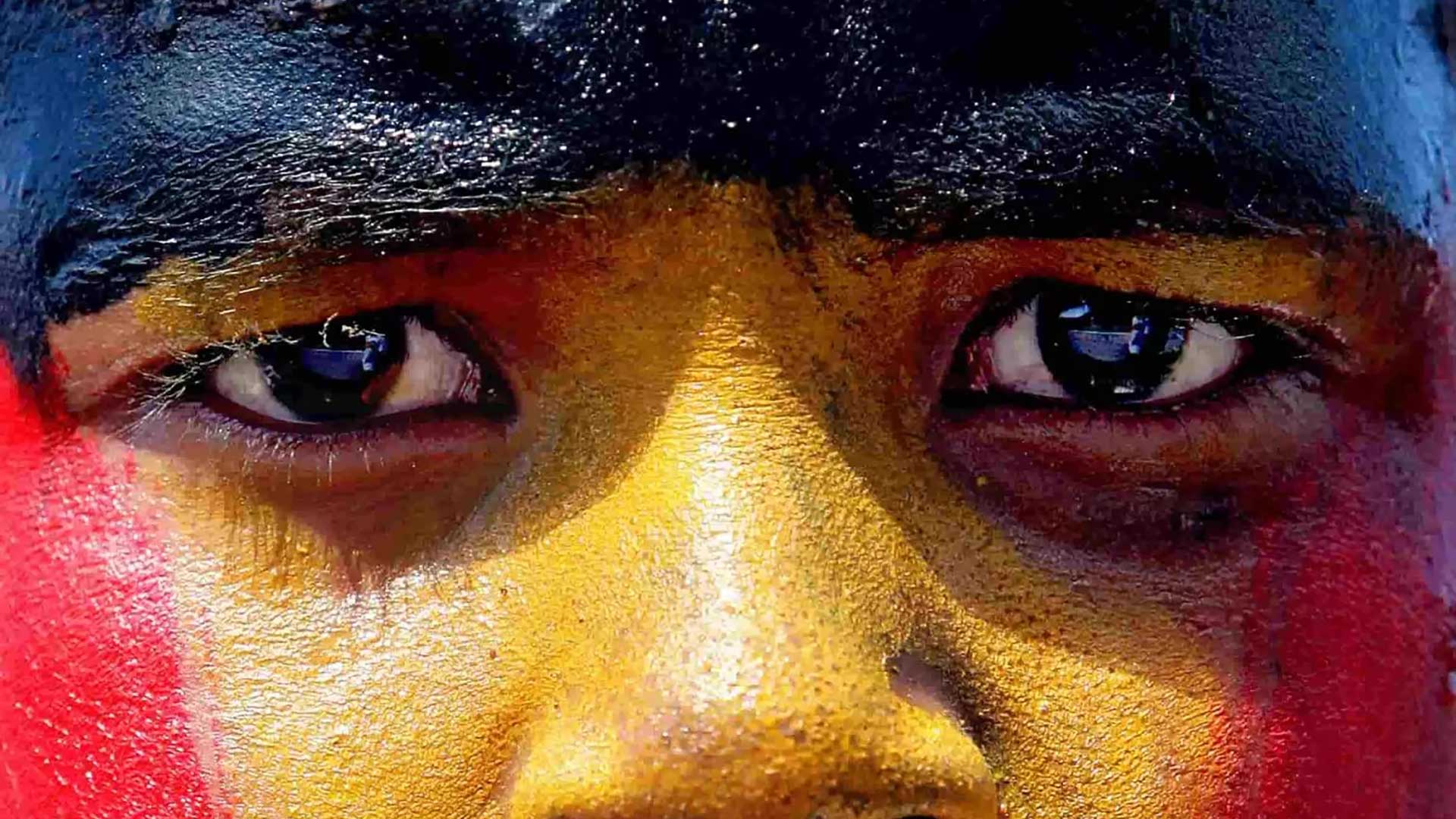
- Timor-Leste has come a long way since gaining independence in 2002, but its reliance on oil and gas revenues could lead to a “fiscal cliff” within the next decade when its sovereign wealth fund is currently projected to run dry.
- Despite being one of Southeast Asia’s most vibrant democracies, a potentially destabilising transition from the political leaders of the “Generation of ‘75” also looms on the horizon.
- Transnational threats will compound the economic and political challenges facing the country. Instability would likely result in international geopolitical ramifications that far outstrip Timor-Leste’s size.
Executive summary
This paper intends to start a conversation about a broad yet crucial question: what does the future hold for Timor-Leste? And in turn, what does that mean for the Indo-Pacific region? It examines key challenges confronting the country over the next decade, with a focus on how economics, governance, and the transnational issues of climate change, pandemic preparedness, and geopolitics will impact the small island nation.
Timor-Leste has accomplished a great deal over the past two decades but faces headwinds that, if left unaddressed, could undo much of what it has achieved. Its future is not preordained, and decisions made by Asia’s youngest nation over the coming years will determine the direction it takes. Australia and Indonesia loom large in this equation, and they will certainly have a vested interest in the course Timor-Leste chooses to take.
Introduction
Timor-Leste is a nation defined still by its 1975–99 struggle for independence, first from Portugal and then from Indonesia. Since regaining formal independence in 2002 after a three-year United Nations mission, Asia’s youngest country has navigated the ups and downs of post-conflict nation-building. It has managed its natural resource wealth in a largely responsible fashion, fostered a spirited democracy that consistently ranks as one of the most effective in Southeast Asia, and combated the Covid-19 pandemic better than many of the world’s developed countries.
However, its journey has not been without challenges. Timor-Leste’s economy is dependent on oil and gas revenues, and, under current projections, state finances are headed for a “fiscal cliff” within the next decade if the Greater Sunrise gas field is not developed. In 2006, the state nearly collapsed due to violence between rival political factions, which was only quelled by the redeployment of international peacekeeping forces that stayed until 2012.
Five political figures from the “Generation of ‘75” — the group of individuals who led the decolonisation movement against Portugal in 1975 and the resistance against Indonesia’s subsequent occupation — continue to dominate Timor-Leste’s politics. They have been crucial to stability, but their personality conflicts have hindered institution-building. The next generation of leaders stands ready, yet the shift may create a power vacuum that destabilises the political system.
As Timor-Leste enters this period of economic and political transition, it will also have to grapple with transnational threats that are challenging the entire world and put the country at the mercy of events it cannot fully control. Collectively, these elements create a combustible mix of circumstances that will define the country’s next decade. The ramifications of domestic instability in this strategically significant nation stand in contrast to the relatively limited global attention presently shown to it.
The long shadow of occupation
On 30 August 2019, the Timorese celebrated the twentieth anniversary of the referendum that led to the country’s independence. Two events that occurred during the lead-up to the celebration were symbolic of the shadows long cast by its largest neighbours, Australia and Indonesia: the promulgation of the Maritime Boundary Treaty between Timor-Leste and Australia, and the opening in Dili of the B.J. Habibie Bridge, named after the Indonesian president who played a central role in the events that led to independence.
To understand modern Timor-Leste, one must grasp the history of the 1975–99 Indonesian occupation — condoned by Australia and Western powers in the name of Cold War politics — that saw an estimated 180,000 Timorese perish. [1] Its impact continues to reverberate across all aspects of society. As academics Sue Ingram, Lia Kent, and Andrew McWilliam describe it, “Timor-Leste’s past — its history of decolonisation and occupation, of divisions and violence — informs the present.” [2]
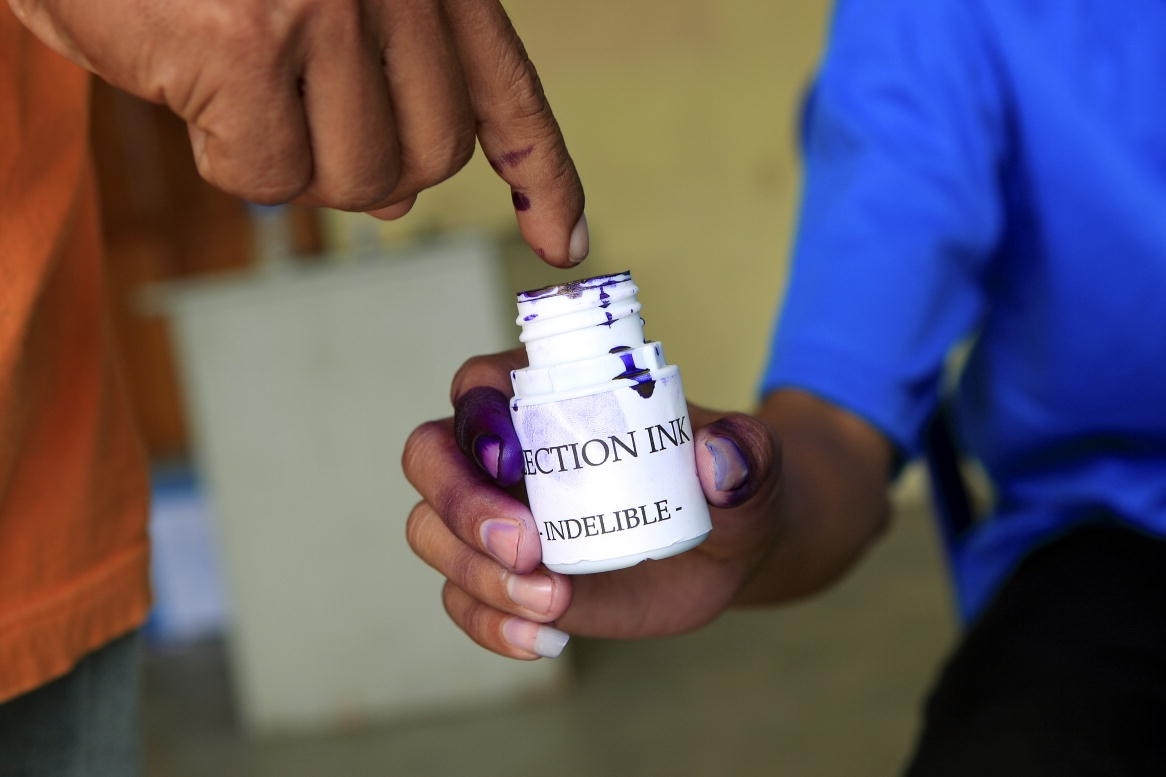
The Timorese doggedly resisted the occupation. An armed resistance waged a guerilla war, in which it was greatly aided by clandestine civilian networks, while overseas Timorese carried on an advocacy campaign in capitals across the world. By the early 1980s, Indonesia had largely consolidated control over Timor-Leste, but was never able to pacify it. The 1991 Santa Cruz massacre, in which hundreds of unarmed civilians were killed or wounded by Indonesian forces, put the occupation back on the world’s radar and catalysed international condemnation — in turn, giving the resistance momentum.
In the late 1990s, the Timorese were presented with an opportunity they had until then only dreamed of: a path to independence via a referendum supervised by the United Nations (UN). Indonesia was reluctant to allow it, but ultimately did so under heavy international pressure, including from Australia. Independence was not actually on the ballot; instead, it was a popular consultation on special autonomy within Indonesia but understood by all as a de facto independence referendum. The lead-up to the 30 August 1999 vote was marred by intimidation and violence from pro-integration militias backed by the Indonesian military, [3] creating a tense atmosphere in which it was difficult to gauge public sentiment.
Under trying circumstances, nearly every eligible Timorese voter turned out, with 78.5 per cent voting to reject special autonomy. [4] Thousands of Timorese were killed in post-election retributive violence precipitated by Indonesian-backed militias, which caused an estimated 260,000 people to flee to Indonesian-controlled West Timor. [5] Peacekeepers under the auspices of the UN, led by then Major General Peter Cosgrove of the Australian Army, were deployed in late September, stopping the bloodshed and starting a long history of multilateral involvement in the country. Twenty-two nations contributed personnel for the peacekeeping mission, with Australia providing a majority of forces deployed.
Timor-Leste also continues to contend with the legacy of three issues left unresolved by its past occupiers: land, language, and development.
On 20 May 2002, the UN transferred sovereignty to a newly independent Timor-Leste, but it was not the end of the institution’s involvement in the country. The new nation started its life as the poorest, on a per capita GDP basis, in Asia and one of the poorest in the world [6] — a starting point that must be kept in mind while evaluating its progress to date. In addition, the Timorese population had to reckon with the human cost of the occupation and societal reconciliation — a tall order for a country where many have familial links on the Indonesian western half of the island.
Since then, Timor-Leste has achieved much. It has navigated the path towards post-conflict nation-building, managed its natural resource wealth in a largely responsible manner, grown its economy, fostered one of the highest-ranking democracies in Southeast Asia, [7] and weathered the Covid-19 pandemic better than many developed nations. [8]
Yet the past 20 years have also proved challenging. The economy is dependent on oil and gas revenues, and state finances may enter perilous territory within the next decade. In 2006, the state nearly failed due to a breakdown in civil order that necessitated the redeployment of UN peacekeepers for more than six years. And five figures from the “Generation of ‘75” — the group of individuals who led the decolonisation movement against Portugal in 1975 and the resistance against Indonesia’s subsequent occupation — continue to dominate politics. While they have been crucial to the country’s stability, their personality conflicts have hindered institution-building and the ascension of the next generation of leaders.
Timor-Leste also continues to contend with the legacy of three issues left unresolved by its past occupiers: land, language, and development. A 2019 US Department of State report notes that the “legal regime governing land and property ownership in Timor-Leste remains unclear”, [9] creating a formidable barrier to property rights and foreign investment. Portuguese remains one of two official languages of government, and the primary language of the courts, but a majority of Timorese do not speak it. A geographic divide persists between the eastern and western regions of the country, which manifests itself in politics, society, and uneven economic development. This is evident, for example, in differences in voting patterns and levels and sophistication of infrastructure across each region.
Building an economy fit for purpose
Like many developing nations, Timor-Leste has undergone significant demographic change and has an overwhelmingly young and growing population, with 73 per cent estimated to be under 35 years of age. [10] The ramifications of this demographic change are only starting to materialise but will reverberate in the years to come.
If one travels to Suai, on Timor-Leste’s south coast, they will see the makings of Tasi Mane, a megaproject intended to provide the necessary infrastructure for processing liquefied natural gas (LNG) from the Greater Sunrise gas field. [11] So far, the project includes the first leg of the Suai Highway, Kay Rala Xanana Gusmão International Airport, and new housing, mainly for residents displaced due to construction. The geopolitical undertones are impossible to miss, with signage from Indonesian and Chinese state-owned companies dotting the landscape.
Tasi Mane personifies the promise and peril that oil and gas hold for Timor-Leste. On one hand, oil and gas have catalysed economic growth and, since regaining independence, allowed the country to achieve a level of development that has markedly improved the lives of its young population. On the other hand, it has afflicted the country with the so-called “resource curse” — a predicament of social, political, and financial instability that has bedevilled oil and gas-dependent countries worldwide. Despite some level of domestic awareness around the issue, it may still spell trouble for Timor-Leste’s future. [12]
Timor-Leste's resource curse
With a 2022 GDP of US$2.02 billion ($1,500 per capita), [13] Timor-Leste is one of the world’s smallest economies. Its dominant petrochemical sector accounts for the vast majority of GDP, with remittances, agriculture, coffee, and tourism making up much of the rest. At 4.9 per cent, [14] the official unemployment rate is low but does not reflect the realities of labour markets. With a poverty rate of 42 per cent, [15] nearly half the population still gets by on the bare minimum.
Much of the country’s wealth is concentrated in and around its growing capital Dili, and those who live in rural areas face starker poverty than their urban compatriots. Someone residing in Laga, a coastal town located in the country’s east, or Maliana, an interior town near the border with Indonesia, lives a fundamentally different life than one does in Dili, where access to job opportunities, consumer goods, and mobile phone coverage is more abundant than in the rest of the country.
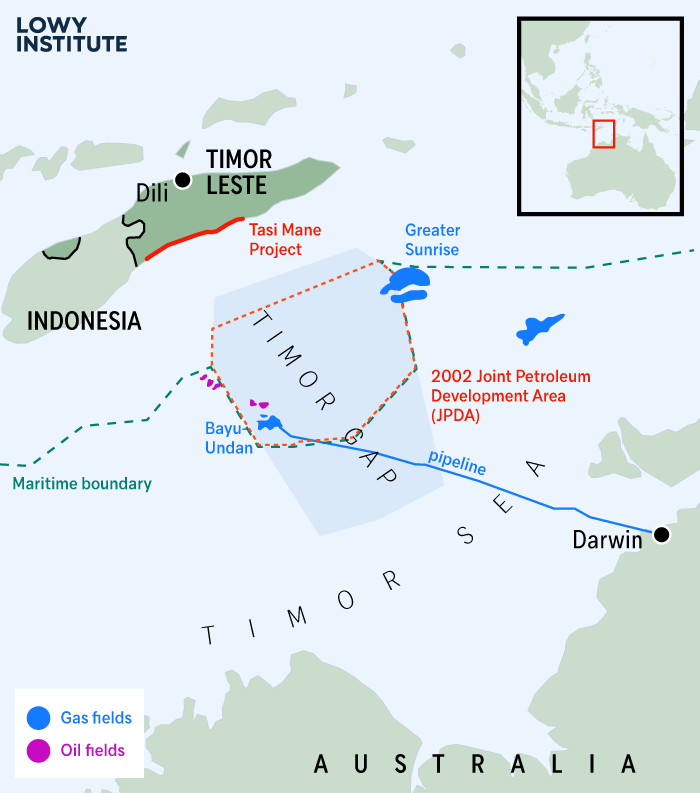
For the country to prosper beyond its capital city, economic development and diversification will be crucial. As a December 2022 World Bank report notes, “Timor-Leste remains overly reliant on hydrocarbon production for sustaining its economy…without the oil revenues, the undiversified economy of the country will solely rely on the rapidly depleting Petroleum Fund to bridge the considerable fiscal gap in its annual budget”. [16]
Timor-Leste is staring at a potential budgetary catastrophe that, under current projections, will occur between the late-2020s [17] and mid-2030s, [18] when the state’s Petroleum Fund — the sovereign wealth fund from which more than 90 per cent of government revenue is derived [19] — is projected to run dry. If nothing is done to change this trajectory, Timor-Leste will eventually see its state coffers completely depleted.
This is a worst-case scenario, and it is one that can be avoided by acknowledging its possibility. It can be fended off in one of two ways: by developing the Greater Sunrise gas field in time to produce substantive royalties for the Timorese state, or by diversifying the economy so it is no longer dependent on oil and gas for state revenue and economic growth.
The politics of Greater Sunrise
One gas field more than any other — Greater Sunrise, located just off the south coast — has come to dominate the conversation about economic development in the country. Other oil and gas deposits in surrounding areas are being explored, but Greater Sunrise is the only one that holds concrete promise thus far. It has the potential to generate tens of billions of dollars in royalties for the Timorese state, and to fill the gap being left by dwindling royalties from the country’s existing Bayu–Undan gas field, the productive life cycle of which will end this year and on which the Petroleum Fund has depended since 2006 for financial inflows.
Timor-Leste’s President José Ramos-Horta claims that financial windfalls from Greater Sunrise could turn his country into “the next Dubai or Singapore”. [20] Others are sceptical, with one energy industry commentator calling the project “an eternal long shot” in which “the odds of progress look as difficult as ever”. [21]
Polarised views have long characterised the debate over the field’s development, and progress remains stalled due to a disagreement between the field’s three joint venture partners — Timor Gap (a state-owned Timorese oil company), Woodside Energy (an Australian petroleum producer), and Osaka Gas (the Australian arm of a Japanese gas supplier). The three entities have yet to agree on whether gas from the project should be processed at to-be-completed facilities in Timor-Leste or existing facilities in northern Australia. There is intermittent talk of a floating offshore platform as a third option, but it does not appear to be under serious consideration.
Timorese leaders have long asserted that Chinese state-linked entities will bankroll Tasi Mane if Australia and its partners do not. However, they have not yet done so.
Since the release of Timor-Leste’s Strategic Development Plan in 2011, [22] successive Timorese governments and Timor Gap have insisted on Tasi Mane — the colloquial name for the new processing and related facilities in Timor-Leste — as the way forward. Broadly speaking, proponents view the northern Australia option as holding less economic promise and representing an affront to their sovereignty, reflecting a lingering mistrust of the Australian government that stems from a scandal in which Australian intelligence services were caught spying on Timorese officials during contentious oil and gas negotiations in the mid-2000s. [23]
Domestically, supporters of Tasi Mane, led by independence hero and current Prime Minister Xanana Gusmão, have tied the project to a wider effort to “reorient a national identity of resistance to one mobilised around the goals of national development”. [24] By doing so, they have politicised the issue in their favour, but also created circumstances under which they could lose face if they change their position.
The Australian-owned Woodside has taken the opposite tack, arguing that Timor Gap’s preferred option is economically unviable and that it makes more sense to use facilities in northern Australia that are able to bring production on-line quicker. Woodside’s position has frustrated the Timorese, who see the Australian government as complicit, despite Canberra’s insistence that it is a decision to be made purely by the joint venture partners and not by governments.
At this stage, the northern Australia option is more likely than Tasi Mane to produce revenue for the Timorese state before the late 2020s, thus providing the inflows necessary to avoid a financial crunch. If Tasi Mane is delayed or not producing revenue by then, the country is at risk of fiscal calamity. [25]
Globally, infrastructure projects frequently encounter delays, and if the proposed gas pipeline comes to Timor-Leste, it is unlikely Tasi Mane will be an exception. The first leg of Timor-Leste’s Chinese-built Suai Highway took two years longer to complete than promised, [26] and its sub-par construction became evident mere weeks after it opened, with a stretch of the road rendered impassable by weather-related damage, which then took months to repair. [27] This raises the question of how technically complicated and fragile LNG processing infrastructure would be built and maintained in the country.
The longer the joint venture partners take to come to an agreement, the closer the fiscal cliff comes.
Further, prospective investors are not queuing up with the necessary capital, despite proponents’ claims to the contrary. Timorese leaders have long asserted that Chinese state-linked entities will bankroll Tasi Mane if Australia and its partners do not. However, they have not yet done so. [28] At a time when China is re-evaluating its Belt and Road Initiative investments and reducing its risk exposure, [29] it seems unlikely — but not impossible — that Beijing will change tack to invest in Tasi Mane.
Timor-Leste held parliamentary elections on 21 May 2023, which saw Xanana Gusmão returned to power as prime minister. Gusmão, who was the country’s first president from 2002 to 2007 and its prime minister from 2007 to 2015, maintains remarkable sway over the nation’s politics. He has long been the lead advocate for Tasi Mane, and his return to power will see the country double down on its stance — at least on the surface. While Gusmão seems likely to maintain his position regarding the megaproject, it is worth remembering that he is arguably the only person who holds the political legitimacy necessary to change direction on the matter.
The longer the joint venture partners take to come to an agreement, the closer the fiscal cliff comes. But there is now a sense of urgency on both sides that may induce action. In February 2023, the stakeholders announced the undertaking of a concept selection study, the results of which are expected in late 2023 or early 2024. In addition, under the terms of the Maritime Boundary Treaty, any development concept will need to be approved by the Australian and Timorese governments.
In May 2023, Timor Gap’s CEO Antonio De Sousa stated that production at the new field could start around 2030 [30] — a timeframe that does not encourage optimism regarding the country’s financial situation. Irrespective of currently held positions, domestic and international actors will need to get behind whatever option is agreed upon and ensure it works for Timor-Leste, as the country needs to draw financial royalties from the field as soon as realistically possible. In the meantime, they should seek to support diversification of the country’s economy.
Economic diversification
Alongside Greater Sunrise, Timor-Leste needs to accelerate economic diversification to create alternative streams for growth, thus reducing its dependence on oil and gas for revenue in an attempt to reverse the “resource curse”. Over the past two decades, this diversification has focused on growing the coffee, agriculture, and tourism sectors — all of which have received substantial international support. To date, the results have not been encouraging.
As the National Coffee Sector Development Plan states, “The coffee industry is a central part of Timor-Leste’s economy, society and history”, [31] accounting for 85 per cent to 90 per cent of Timor-Leste’s annual non-oil merchandise exports since independence. In 2021, the country exported US$16.3 million worth of coffee [32] — a figure that may grow as global consumer habits and trade flows recover from the disruption of the Covid-19 pandemic.
More than 70 per cent of Timorese draw income from the agriculture sector, [33] primarily through subsistence farming. But, due to international market access hurdles and inefficient farming practices, much of what is produced is consumed domestically and exports remain a drop in the bucket. In fact, according to the World Food Programme, Timor-Leste imports 60 per cent of its food. [34]
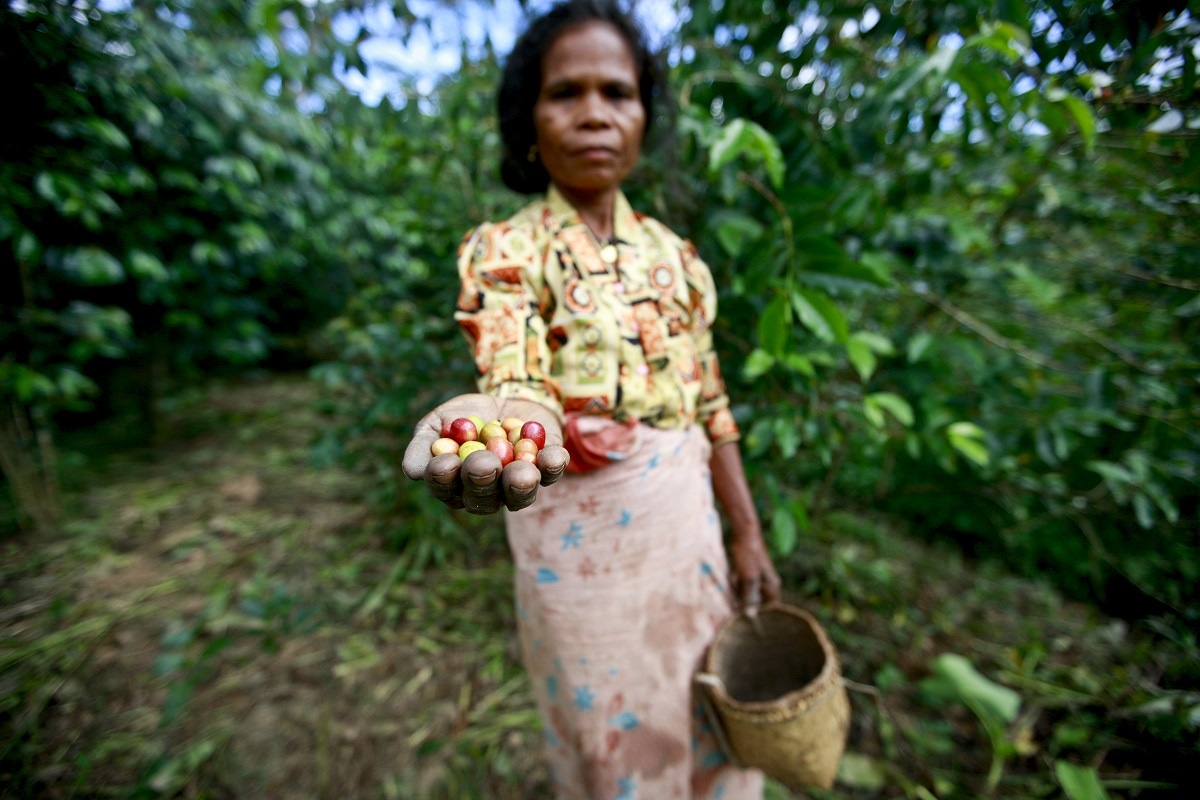
Tourism has long been touted as a growth sector, with the country’s biodiversity, scuba diving, and natural beauty all potential draws for visitors. Signs of progress were evident prior to 2020, with tourist arrivals increasing to 74,800 in 2019. [35] But the sector was decimated by the Covid-19 pandemic and has yet to fully recover. In addition, practical factors such as limited air access present formidable barriers to tourism.
Collectively, these three sectors are unlikely to grow to the point where they can fill the revenue gap if Greater Sunrise does not pan out. Nonetheless, they are meaningful pieces of the diversification puzzle — especially agriculture, which would be imperative to a sustainable domestic food supply under a worst-case economic scenario. A number of these scenarios will be explored in the conclusion of this paper.
As demonstrated by several Pacific Island states, labour migration causes a brain drain that can sabotage economic, political, and social development.
In addition to the coffee, tourism, and agriculture sectors, several industries such as fisheries and carbon capture and storage (CCS) could fill part of the economic gap, and are currently being pursued to varying degrees. In May 2023, the Australian oil and gas exploration company Santos announced plans for CCS at Bayu-Undan, [36] but the revenue potential and technology remain unproven. Industries including financial services and gaming have also been floated as possible sources of additional revenue, but seem largely fanciful at present.
One source of economic growth that is here to stay, however, is remittances, which are presently the country’s second-largest source of income. [37] Young Timorese, frustrated by the lack of jobs and opportunity at home, are increasingly seeking work overseas, often sending money to their families back home. This provides an important injection of currency into the economy that, in turn, is used to purchase goods and services, often from local businesses.
However, the downsides of remittances are many. As demonstrated by several Pacific Island states, labour migration causes a brain drain that can sabotage economic, political, and social development. At a time when Timor-Leste must attract much-needed financial capital, an exodus of its most skilled and accomplished people is the last thing it needs.
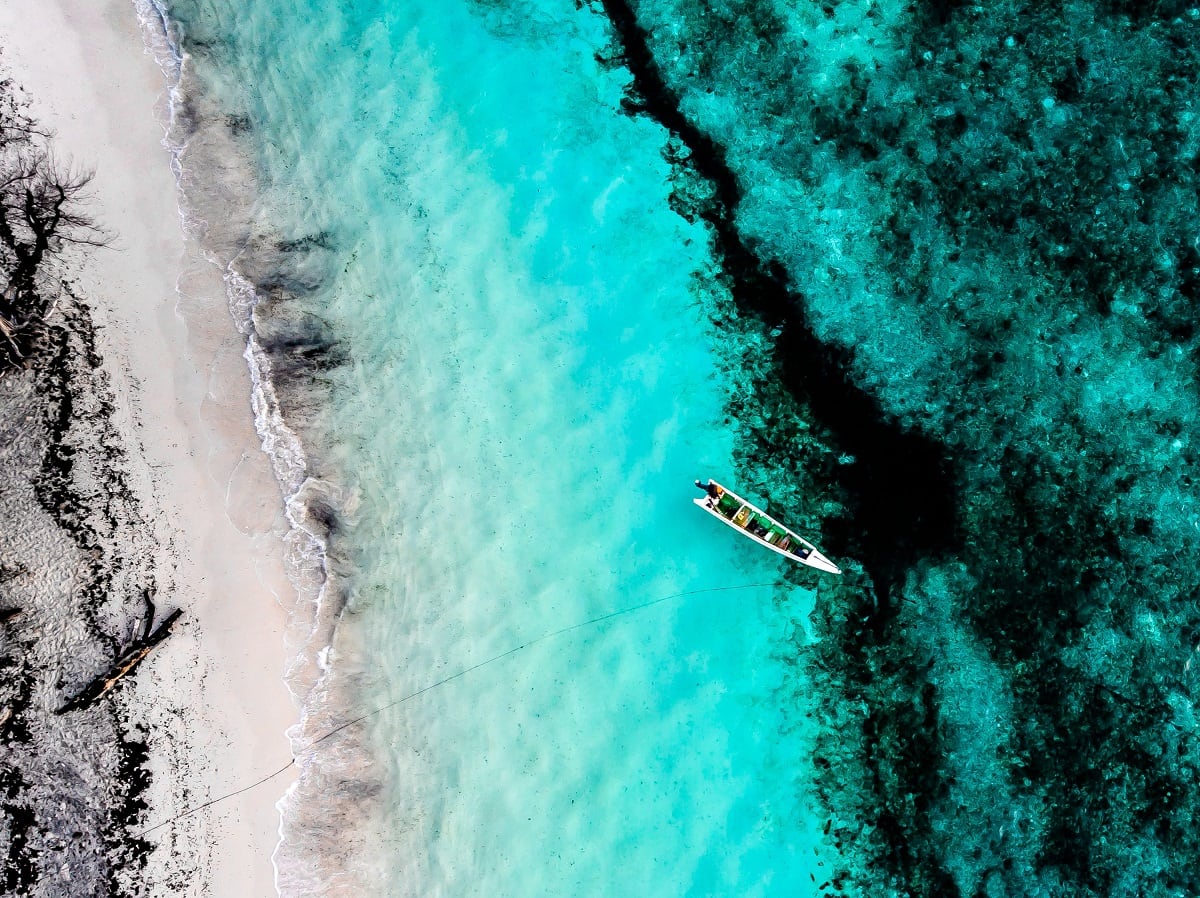
Yet labour migration is only set to grow, especially as opportunities emerge in the region, such as through the expanded Pacific Australia Labour Mobility (PALM) scheme [38] and South Korea’s recent “embrace” of foreign labour amid domestic shortages. [39] Further afield, Timorese may continue to migrate to destinations such as Portugal and Northern Ireland, where sizeable Timorese diaspora communities reside.
Basic manufacturing, another oft-discussed sector, has been subject to fits and starts that are perhaps best symbolised by the arrival of global brewer Heineken in Timor-Leste in 2018, with the Dutch-owned company making “the first foreign investment in the [country’s] manufacturing sector”. [40] Some news reports bullishly claimed that the multinational’s entry could “open taps on foreign investment”. [41] The brewery on Dili’s outskirts has weathered an arduous operating environment and holds lessons about the challenges and opportunities facing foreign investors.
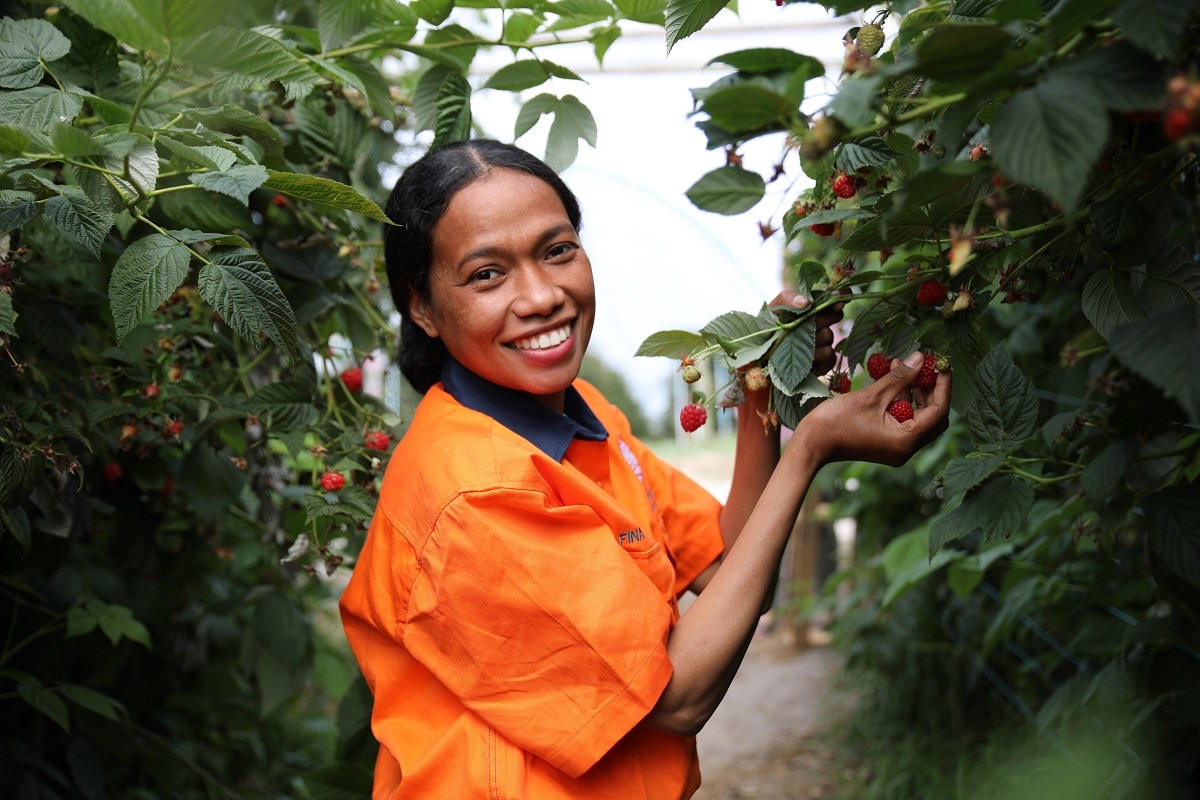
Heineken encountered issues long familiar to the country’s nascent private sector, such as workforce capacity and regulatory uncertainty. It reportedly did not meet domestic production commitments, [42] and there were questions about whether the Timorese market was large enough for it to turn a profit. But the factory remains open, and the company has been able to sustain its operations.
Timor-Leste’s export potential
To compensate for Timor-Leste’s market size, companies may need to export to external markets to turn a profit and sustain operations. The country’s coffee sector provides a good example. In 2017, Starbucks, the world’s largest coffee company, exported beans from Timorese producers to feature in specialty blends carried at locations worldwide, [43] making Timorese coffee accessible in cities such as Washington, DC, where it had never previously been available at scale.
For a host of reasons, Indonesia is the most likely market for exports, which the Timorese are pursuing through initiatives such as Special Zones of Social Market Economy (ZEESM). The ZEESM in Oecusse — a special administrative region of Timor-Leste — is a billion-dollar megaproject intended to incubate basic manufacturing growth through links with Indonesian supply chains. It includes a new international airport and the country’s largest bridge, echoing the same “build it and they will come” mentality as Tasi Mane.
Closer economic ties with Indonesia may seem an obvious path, but formidable political hurdles exist.
In this vein, Fidelis Magalhães, a senior Timorese government minister from 2018-23, has called for a free trade zone (FTZ) with Indonesia, [44] which would help Timor-Leste benefit from recently announced plans for manufacturing growth in East Nusa Tenggara, [45] the Indonesian province with which Timor-Leste shares a land border. In addition, the newly operational Tibar Bay Port — 12 kilometres from Dili — gives Timor-Leste a competitive advantage as it aims to integrate itself into regional logistics networks.
It remains to be seen how viable the Oecusse ZEESM and FTZs with Indonesia will be. In 2019, Michael Rose, who has conducted extensive research in Oecusse, wrote that the ZEESM’s development had been a “mixed bag”, [46] and in 2020, Fredrik Sjöholm argued that “there is a real risk that Tasi Mane and the Oecusse industrial cluster will turn out to be white elephants”. [47]
Closer economic ties with Indonesia may seem an obvious path, but formidable political hurdles exist. The author raised this prospect with a Timorese government official, who immediately pointed to apprehensions about economic dependence on Indonesia and how it might enable de facto control over Timor-Leste. Current data gives a level of credence to this viewpoint. In 2021, nearly 40 per cent of Timor-Leste’s imports came from Indonesia, and more than 73 per cent of its exports went to Indonesia. [48] The Timorese official noted regional integration as one way the country protects itself from over-reliance on any one external power, [49] reflecting the long-standing emphasis placed on multilateralism by Timorese decision-makers.
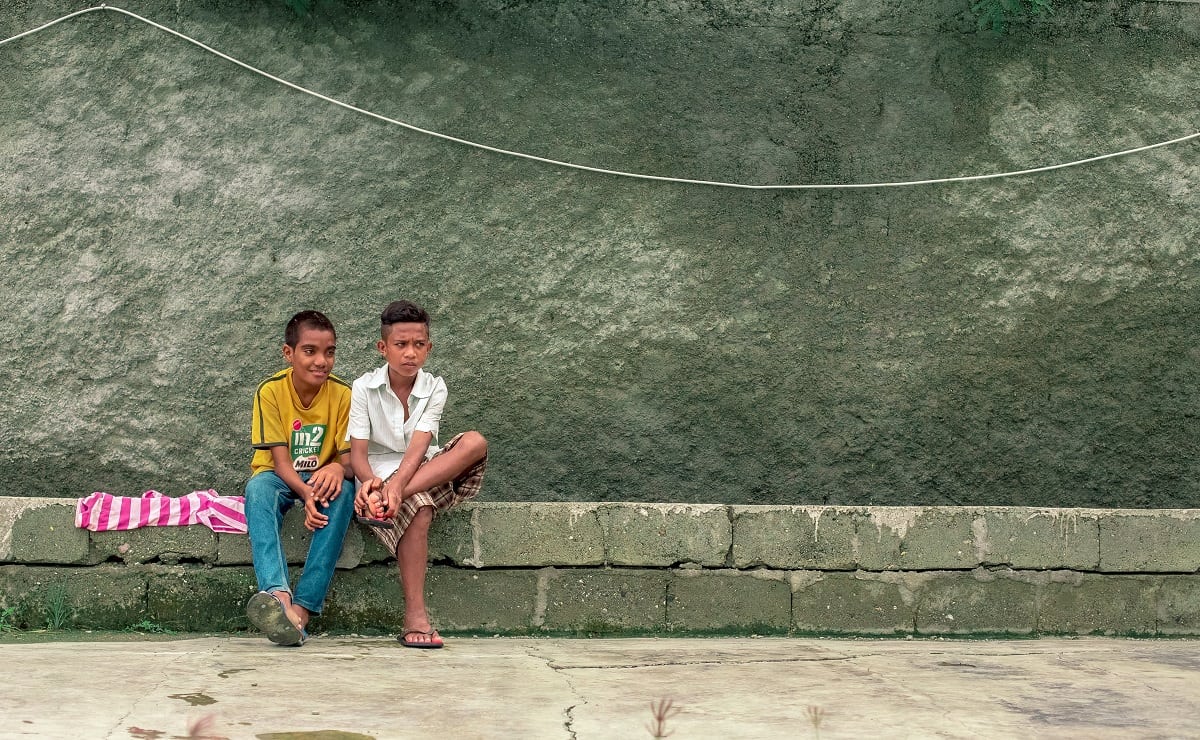
While not the focus of this paper, Timor-Leste must develop a workforce that can compete within the region. To do so, it needs to vastly improve its health and education systems. Malnutrition is prevalent, and issues such as stunting disadvantage many Timorese from infancy. Schools are not teaching students the skills they need to succeed, leaving a workforce that is not ready to fill technically skilled let alone basic jobs.
A looming leadership transition
The state of the country’s economy is central to its political stability — all the more so as Timor-Leste approaches a period of political transition. A diversified economy that creates enough jobs for its young population will go a long way towards ensuring a stable, peaceful transition, while the inverse could cause instability.
Since regaining independence in 2002, Timor-Leste has withstood shocks that would test any post-conflict country. The 2006 crisis almost undid the state, and there have been four changes of government in the past five years.
As the country navigated these challenges, it built democratic institutions that now stand on their own, and its people showed that they cherish their right to vote. However, those institutions draw upon the legitimacy of resistance-era leaders from the “Generation of ‘75” and, by extension, the near-universal trust Timorese place in them.
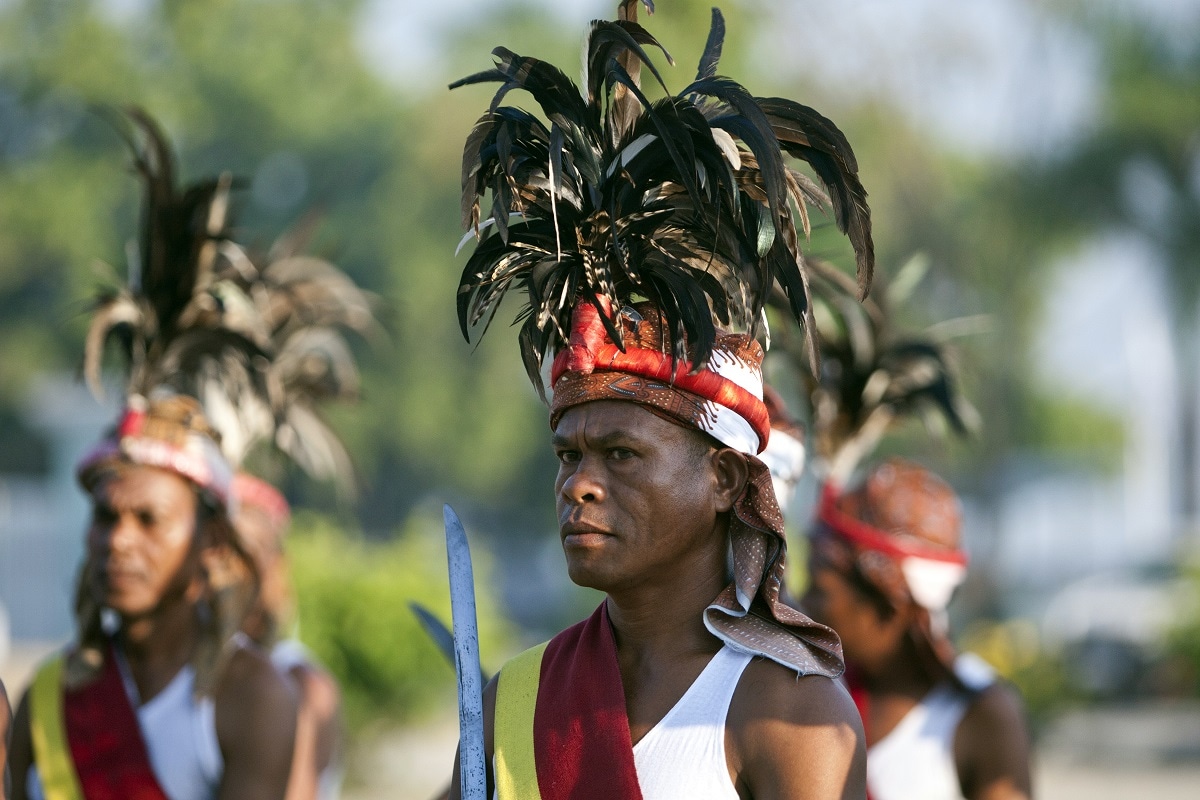
To better understand what might be in store for the country’s young democracy when the time comes for resistance-era leaders to pass the baton to their successors, one must examine the dual dynamics that define Timorese politics. The first is the web of interpersonal relationships that underpins the political party landscape. The second is the relationship between Xanana Gusmão and Mari Alkatiri, two of the country’s most powerful political leaders, whose ups and downs in their personal and political relationship greatly influence the course of events.
The political terrain
Timor-Leste has a semi-presidential parliamentary system of government. The prime minister serves as head of government, while the president serves as head of state. The former is the more powerful of the two offices, as it leads the country’s executive, the Council of Ministers. Ministers do not concurrently hold seats in the National Parliament, thereby reducing the role of parliamentarians in day-to-day governance. Parliamentarians are elected from a single nationwide electorate through a closed-list electoral system that further strengthens the role of political parties as institutional actors in politics and governance.
On the surface, the political landscape in Timor-Leste is cleanly delineated between several political parties. The National Congress for Timorese Reconstruction (CNRT) and the Revolutionary Front for an Independent East Timor (FRETILIN) are dominant, and smaller parties such as Kmanek Haburas Unidade Nasional Timor Oan (KHUNTO), the Democratic Party (PD), and People’s Liberation Party (PLP) exercise influence through the coalition-building necessary for forming government in the country’s proportional representation electoral system.
Timor-Leste has a family-oriented society that values dialogue and consensus, and its people want their representatives to consult their opponents and come to accord on any given issue.
Dig deeper, however, and the landscape becomes anything but clear, with criss-crossing familial, communal, and interpersonal relationships that run deep and often supersede party loyalty. Observers who are used to clear-cut governments and oppositions — and diplomats schooled in thinking of the state as an impersonal legal-rational construct — may wonder why this dynamic matters.
The answer is simple: culture. Timor-Leste has a family-oriented society that values dialogue and consensus, and its people want their representatives to consult their opponents and come to accord on any given issue. This is borne out by public opinion research. A 2018 national public opinion poll showed that 91 per cent of respondents believe it is important that the government seek input from the opposition and include them in the decision-making process. That same poll also showed a near-identical number of respondents believing it is important to have both a stable government and strong opposition — 91 and 90 per cent, respectively. [50]
These numbers, and the underlying cultural dynamics they reflect, often lead to fluid personal alliances or politicians disavowing their previously stated policy preferences. An example is the 2020 change in government, which saw PLP and KHUNTO defect from the CNRT-led Alliance for Change and Progress (AMP) to form a new government with FRETILIN. Pre-existing affinities between key FRETILIN and PLP figures, some of whom fought together during the resistance and draw upon overlapping interpersonal networks in the municipality of Baucau, helped smooth the way. This certainly was not the only factor that led to the formation of the new government, but it was an important one.
Xanana Gusmão versus Mari Alkatiri
Xanana Gusmão, who leads CNRT, is often referred to by Timorese as maun bo’ot — the big brother. His leadership of the National Council of Maubere Resistance (CNRM), an umbrella organisation founded in the late 1980s that united a then-fractured independence movement, cemented his stature among the Timorese, which only grew while he was imprisoned by Indonesian forces from 1992–99. He served as president of Timor-Leste from 2002–07, prime minster from 2007–15, and continued to lead maritime boundary negotiations with Australia until 2022.
Mari Alkatiri, who leads FRETILIN, exercises influence unrivalled by any other politician, save Gusmão. He was one of the original ministers in Timor-Leste’s briefly lived 1975 government and spent the resistance era in exile in Mozambique. He returned to Timor-Leste in 1999 and served as prime minister from 2002–06, administrator of the ZEESM from 2014–19, and again as prime minister from 2017–18. He continues to hold sway over FRETLIIN, of which he has long served as secretary-general.
The dominance of resistance-era leaders has contributed to stability and democratic consolidation, especially over the past decade.
Gusmão and Alkatiri’s rivalry is one of the key factors that drives Timorese politics. Relations between Gusmão and Alkatiri have long been contentious. At times, discord between the two has single-handedly destabilised politics to the point of causing civil unrest and state breakdown. [51] All Timorese elections have been either a direct or indirect contest between the pair. Indeed, Dili-based journalist Antonio Sampaio called the 2022 presidential election a “clash of the founding fathers”. [52]
Alongside them, three other resistance-era figures have risen to the political summit: President José Ramos-Horta; former prime minister José Maria Vasconcelos, popularly known as Taur Matan Ruak; and former president Francisco Guterres, popularly known as Lú-Olo. All are influential and can leverage the Gusmão–Alkatiri dynamic to their advantage, but are ultimately subordinate to the two. Collectively, these five men define the “Generation of ‘75” in the eyes of the Timorese people, who place their faith in them and, by extension, the institutions they lead, to steward the nation.
The dominance of resistance-era leaders has contributed to stability and democratic consolidation, especially over the past decade. But it has also hindered the growth of institutions and suppressed alternative ways of thinking on public policy. Polling from 2018 indicated that Timorese were frustrated about the direction in which the country was moving, [53] but did not blame their leaders; instead reporting favourable feelings towards and continued trust in them.
Barring unforeseen circumstances, the May 2023 election will likely be the last electoral bout between Gusmão and Alkatiri and could even be the last in which resistance-era credentials are the decisive factor. The “Generation of ‘75” is advancing in age — Gusmão, Alkatiri, and Ramos-Horta are in their seventies, while Ruak and Lú-Olo are in their late sixties — and their inevitable retirement from politics is approaching, even though Gusmão was returned to the prime ministership in July this year.
Generation of '75
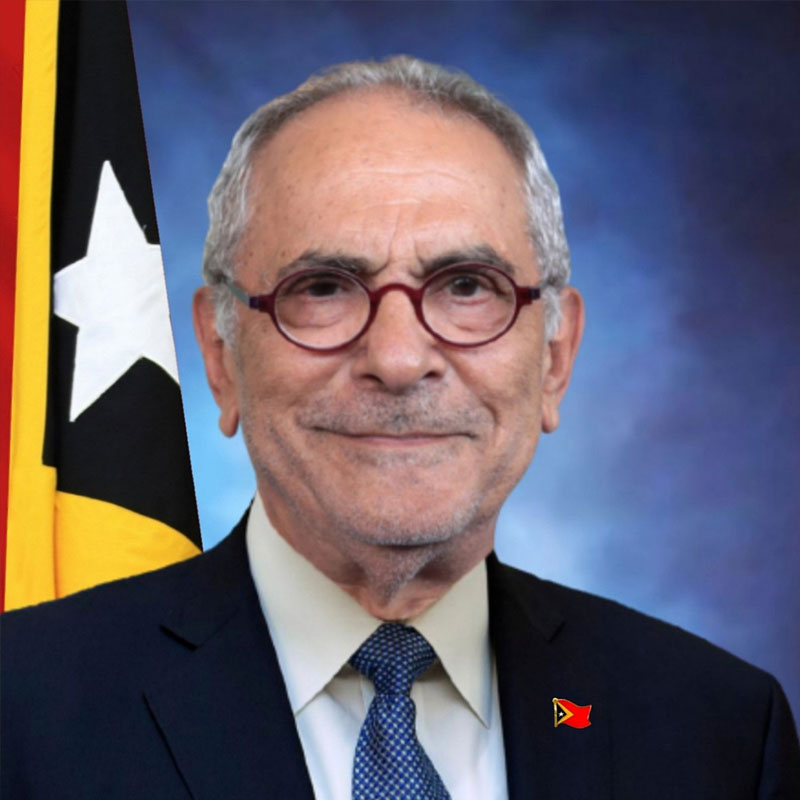
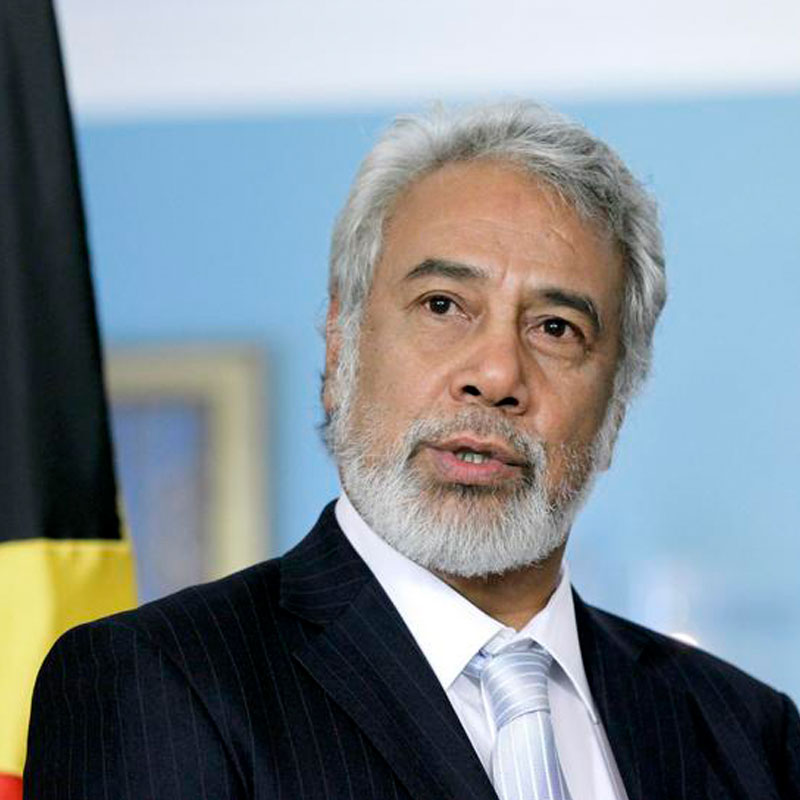
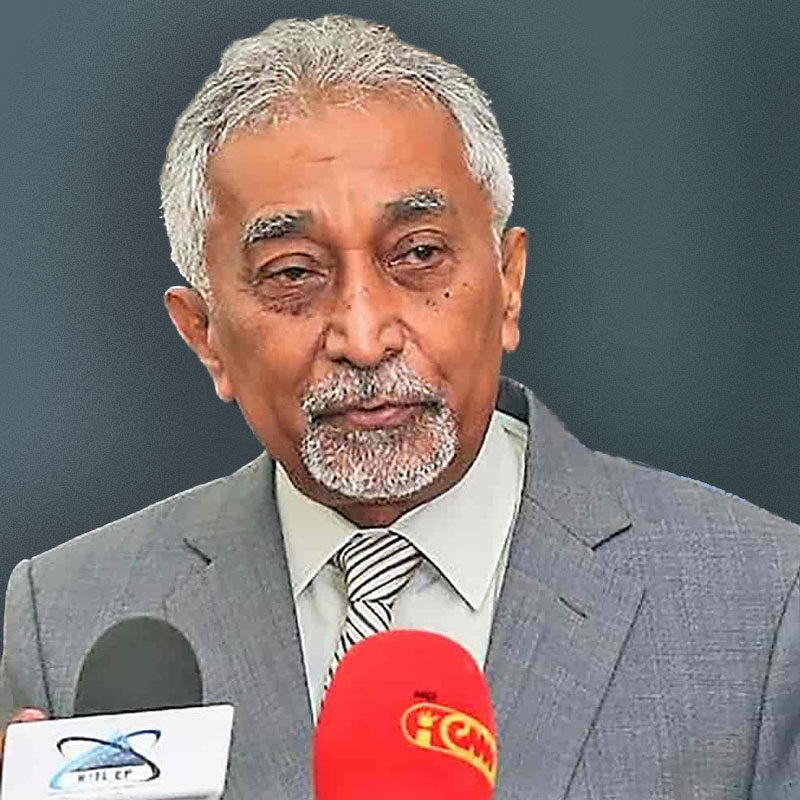
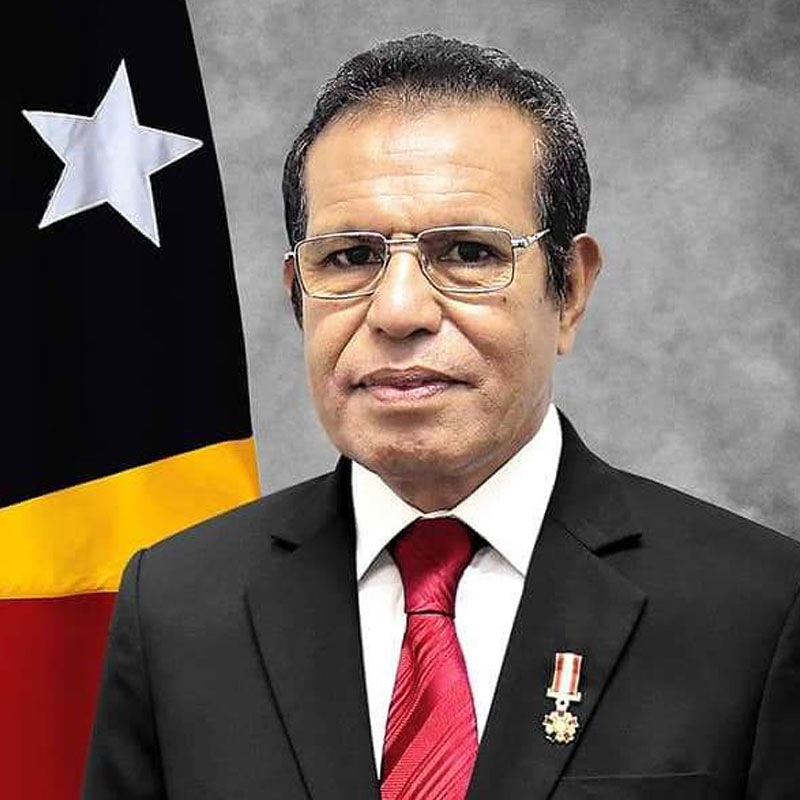
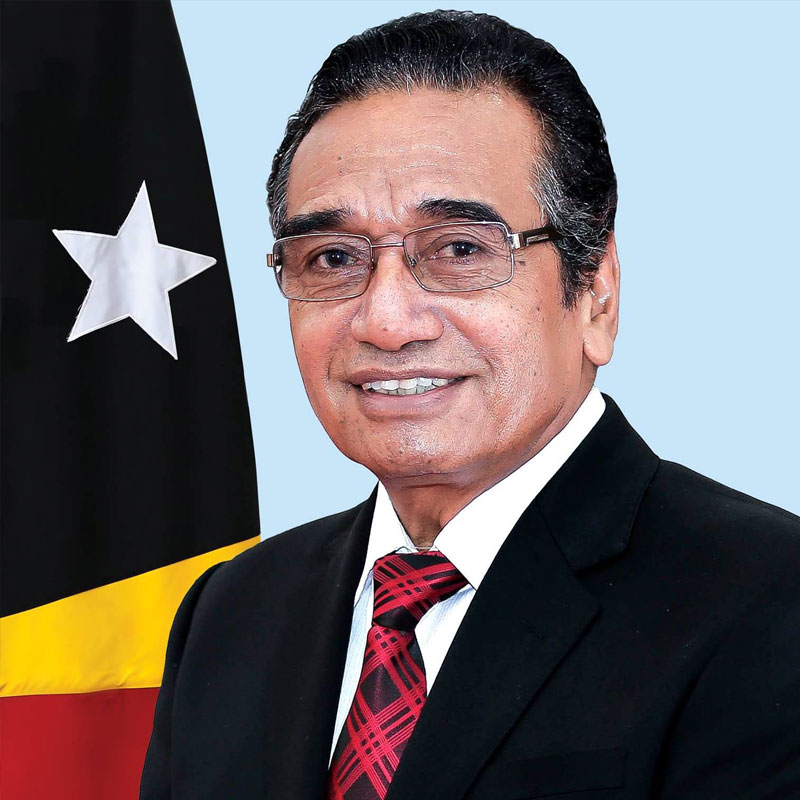
The next generation
Politicians anywhere are loath to cross those in power, and many of those who comprise the next generation of leaders in Timor-Leste hold strong personal loyalties to resistance-era figures. That, alongside the trust Timorese have in those figures, makes public discussion of an eventual changeover somewhat taboo. Nevertheless, the transition to a new crop of leaders is front of mind for Timorese and international observers alike.
Will the resistance-era leaders orchestrate a relatively orderly transfer of power? Or will they hang on as long as they can, only retiring when they must and leaving a power vacuum in their wake? This section explores how each of these scenarios may play out, along with a third scenario that falls between the two.
Scenario 1: Tidy handover
When it comes to Timorese politics, it is worth clarifying the meaning of “next generation” as the phrase has been used to describe different groups. In this case, it refers to the crop of established leaders in their forties and fifties who have served in senior government or party leadership roles, many of whom draw upon their roots in the resistance-era student movement for legitimacy. Younger Timorese leaders in their twenties and thirties will absolutely play a role, but most likely a subordinate one to the generation above them.
Key figures to watch include Mariano Sabino Lopes “Assanami”, Rui Maria de Araújo, Aniceto Guterres Lopes, Dionisio Babo Soares, Aderito Hugo da Costa, Fidelis Magalhães, Nívio Magalhães, and Armanda Berta dos Santos. This is not an exhaustive list, as others will certainly emerge as contenders. That it comprises mostly men reflects the state of gender equality in Timorese society.
A tidy handover, in which the “Generation of ‘75” proactively anoints the next generation to lead the country, would go a long way towards ensuring a smooth transition. It would give the latter political legitimacy in the eyes of the people, which they currently lack, as the former would figuratively transfer theirs downwards. If Gusmão and Alkatiri tell the people who their successors are, they will listen and, in all likelihood, embrace them.
Scenario 2: Power vacuum
However, what would happen if one (or more) of the resistance-era leaders were abruptly removed from the equation due to retiring from politics or declining health? This could create a power vacuum and set off a succession scramble that might destabilise the nation — especially if those who aim to fill the vacuum lack the public trust held by resistance-era leaders.
Under such a scenario, a crisis of confidence in the political system seems more likely than not, particularly if Gusmão were to unexpectedly exit public life. His “godfather of the nation” status serves as a societal unifier. [54] Many Timorese are apprehensive about what would happen without him.
In all political transitions, incumbent power structures lose some degree of control, creating space that often divides past and present. In Timor-Leste, an unexpected transition could see dormant fissures from the occupation era, such as those between integrationists (with Indonesia) and nationalists, resurface. More contemporary social fault lines, such as those between martial arts groups, many of whom have links with political parties and are popular amongst young people, will also come into play. For example, KHUNTO maintains formal links with one of the country’s largest martial arts groups, Wise Children of the Land (KORK).
A number of experts interviewed for this paper, each of whom requested anonymity, raised the prospect of a repeat of the 2006 crisis under this scenario, especially if the economy were performing poorly. [55] This is still unlikely but not impossible. If anything, it was yet further demonstration of how the ghosts of 2006 still linger in the public imagination, and especially among international observers, despite the progress made since healing divides from that period.
Scenario 3: MUDDLING THROUGH
A further scenario – in many ways the most likely to eventuate – falls between that of a tidy handover and a power vacuum. Comparative cases such as Fiji, Guinea-Bissau, and Solomon Islands hold applicable lessons for policymakers. Even in mature political systems, the passage of power is complex, and being able to draw upon a well of democratic resilience is important to ensuring an orderly, peaceful outcome.
Timor-Leste has access to that resource — one that few other countries in the region possess. Democracy is not an esoteric concept for the Timorese; the individual and collective sacrifices they endured to cast their votes for independence in 1999 are proof of that. The country’s average voter turnout of 80.3 per cent since 2002 [56] is higher than that of most established democracies and shows that the Timorese are politically engaged and committed to their democratic processes.
In any Timorese election, local-level societal structures, which have persisted for years, can provide equilibrium. Key institutions — the Catholic Church, veterans’ organisations, the defence forces, civil society organisations, and martial arts groups, to name a few — will play meaningful political roles. [57] And new entities may also emerge, especially if they represent young people, whose desires and actions will be a factor in the course of events.
Collectively, these elements bolster the case that Timor-Leste will weather a transition, planned or not. However, a struggling domestic economy coupled with the potential for internal unrest — a phenomenon that economists Brock Blomberg and Gregory Hess call the “poverty-conflict trap” [58] — should still be cause for concern.
In addition, transnational hazards may exacerbate Timor-Leste’s economic and political challenges. Predicting how they will materialise is an exercise in educated guesswork, but if recent events offer any indication, those hazards are poised to alter Timor-Leste’s circumstances for the worse, not the better.
Transnational threats
Tropical Cyclone Seroja, which hit Timor-Leste in April 2021, was a test case for the impacts of climate change and pandemics on the country. Historically, cyclones have rarely hit Timor-Leste, but environmental shifts are altering this trend. Seroja arrived in the middle of the country’s worst Covid-19 wave, stretching an already-strained public health system to breaking point.
Timor-Leste withstood its worst natural disaster in 40 years but was shaken by it. Infrastructure was damaged, crops were destroyed, and Covid-19 cases spiked, serving as a real-time demonstration of the country’s vulnerabilities to transnational shocks and challenges. In the cyclone’s aftermath, government officials sought international support for recovery efforts, and in doing so also got a taste of geopolitical tensions to come.
Climate change
Like other countries in Southeast Asia and the Pacific Islands region, Timor-Leste is already experiencing the effects of climate change. As an island nation, it is among the most vulnerable. The Asian Development Bank and World Bank 2021 Climate Risk report’s key indicator projections for Timor-Leste are ominous. [59]
The country is experiencing heavier rainfall and increased flooding, which is compounded in Dili by an inadequate sewerage system and a growing urban population. A shifting rainy season is changing crop cycles, adversely impacting those who depend on its predictability for harvesting. And many Timorese living in low-lying areas near the coast are subject to sea level rise, which is affecting established livelihoods.
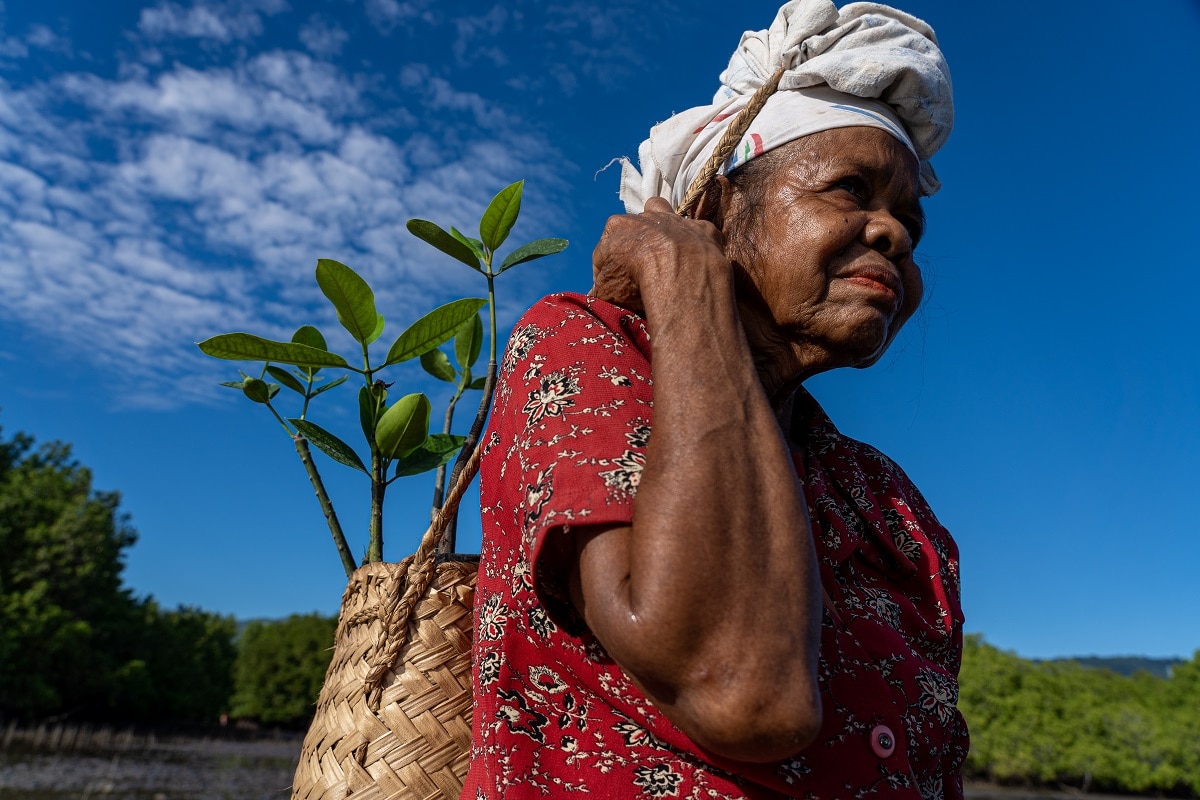
Future impacts will not be just environmental, but also economic. As the world embraces cleaner sources of energy, demand for oil and gas will inevitably decline, thus calling into question promised revenue projections for Greater Sunrise. Several individuals interviewed for this paper expressed confidence that there will be demand for Timorese LNG later this decade, [60] but will prices be high enough to sustain exports? Could Timor-Leste be edged out of the market due to falling global prices?
Agriculture will be impacted, too. Much of Timor-Leste’s limited arable land is low-lying, and rising sea levels may reduce the amount available to farm. This reinforces the existing need for higher-quality agricultural inputs that can maximise efficiency and output. Securing a sustainable domestic food supply may become more difficult, thereby increasing dependence on imported foodstuffs and foreshadowing issues of food security.
Timor-Leste can do little to alter global emissions, but it can band together with other small, climate-vulnerable nations through multilateral bodies such as the g7+, the secretariat for which is headquartered in Dili, to rally support for global action. Timor-Leste has led the way on reducing the use of plastic and is “set to become the world’s first country to recycle all of its plastic waste”, [61] setting an example the rest of the world can follow.
Future pandemics
Despite the fragile state of its healthcare system, Timor-Leste handled the Covid-19 pandemic as best it could. The country had the luxury of being a half-island state that could close its borders, and public health officials — led by Dr Rui Araújo, a next-generation figure who previously served as prime minister and minister of health — managed a disease prevention and mitigation program competently.
However, the pandemic still damaged the Timor-Leste economy. According to the United Nations, the country “experienced the largest GDP contraction since its independence”. [62] As of December 2022, the World Bank noted that Timor-Leste’s economy is slowly recovering from the impact of the pandemic (and Cyclone Seroja). [63]
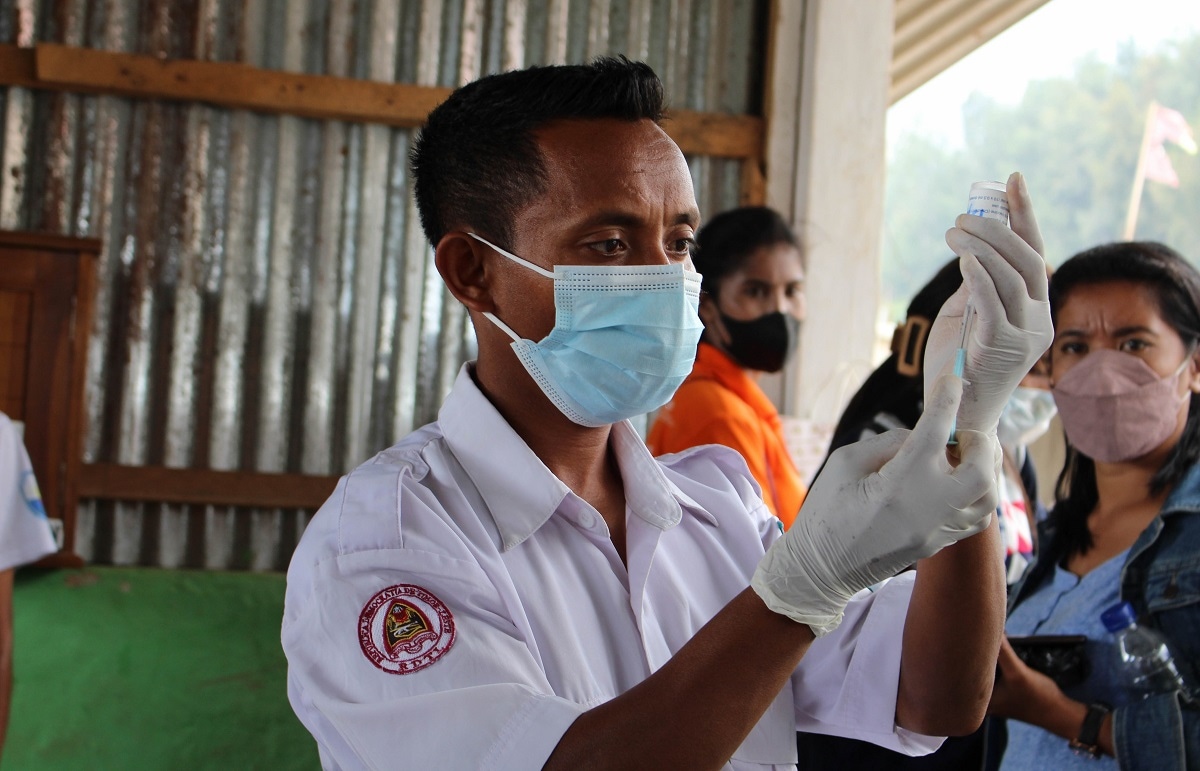
While Covid-19 has subsided, the country remains vulnerable to future pandemics. If it is to weather the next one, it must improve not only the quality of its healthcare system but greatly expand access, particularly in rural areas. As the World Health Organization (WHO) notes, doing so will also lead to better education outcomes [64] — both of which are key to increasing human capital and catalysing economic development.
The pandemic also provided a window into the geopolitical currents facing Timor-Leste. The country was dependent on imported vaccines, and it received hundreds of thousands of doses from Australia, [65] China, [66] and the United States. [67] All three nations actively touted their donations, seeking to gain favour with the Timorese, likely presaging the dynamics that future geopolitical rivalry will present. With a degree of astuteness, Timor-Leste may be able to leverage these dynamics for greater international attention.
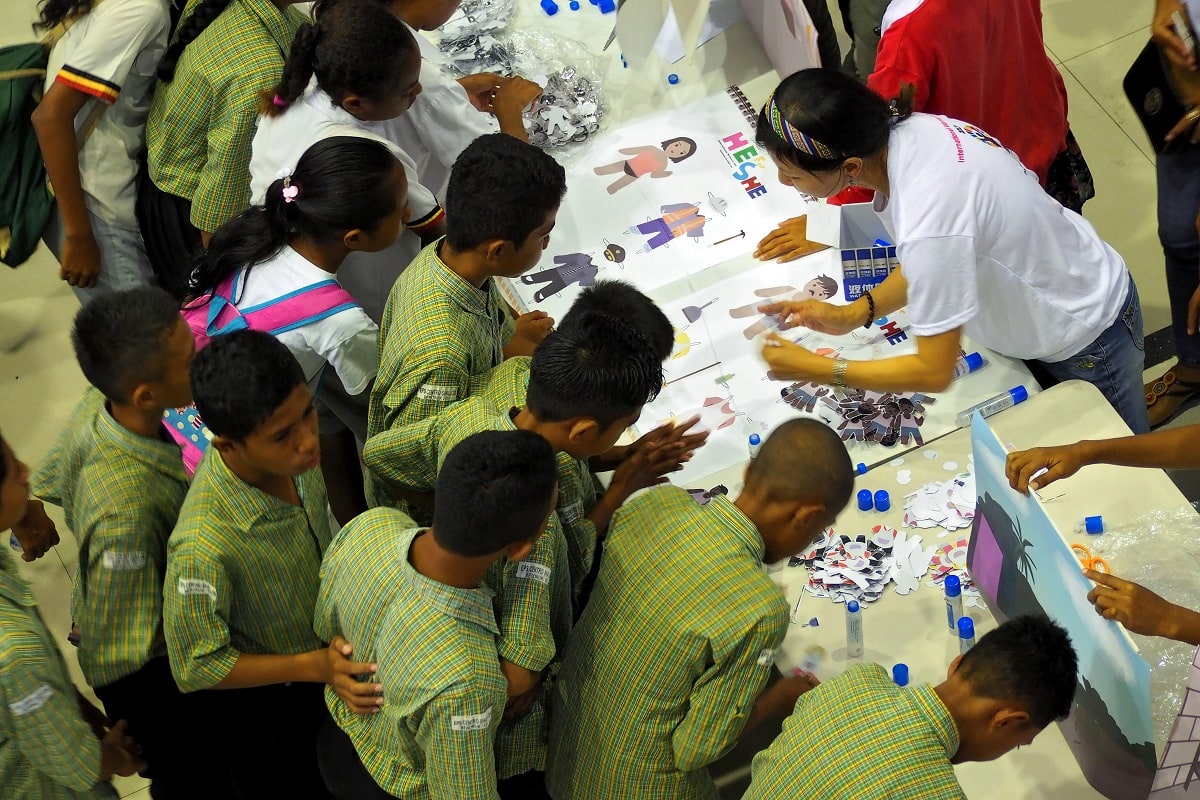
Geopolitical competition
As the United States, China, and their respective allies and partners increasingly engage in a geopolitical competition set to define the Indo-Pacific region, they are looking to woo Timor-Leste. Why? Location, location, location. The country lies near the middle of the Indonesian archipelago, which is a key determinant of stability in Southeast Asia. In addition, Timor-Leste’s position along the Ombai-Wetar Strait — the deep waters of which “provide undetected access for submarines between the Pacific Ocean and the Indian Ocean” [68] — is of strategic interest to Beijing, Canberra, Jakarta, and Washington.
Like their neighbours, the Timorese have leveraged this increased attention to secure investments from a variety of major powers. These include, but are by no means limited to, Australian funding for a fibre optic cable to increase connectivity; [69] US support for large-scale water, sanitation, and health projects; [70] and Chinese financing of infrastructure, including Tibar Bay Port, through state-owned entities. [71]
Successive governments in Dili have sought to capitalise on geopolitical competition to secure financial support for the development of Tasi Mane. In doing so, they have played up the prospect of Chinese investment not just as an end in itself, but as a means of pushing Australia and Western-aligned countries to do likewise. Western partners seem to remain Dili’s preferred source of investment. As President Ramos-Horta told The Guardian in August 2022, “Timor-Leste would favourably consider partnership with Chinese investors if other development partners refuse to invest in bringing gas via pipeline to Timor-Leste”. [72]
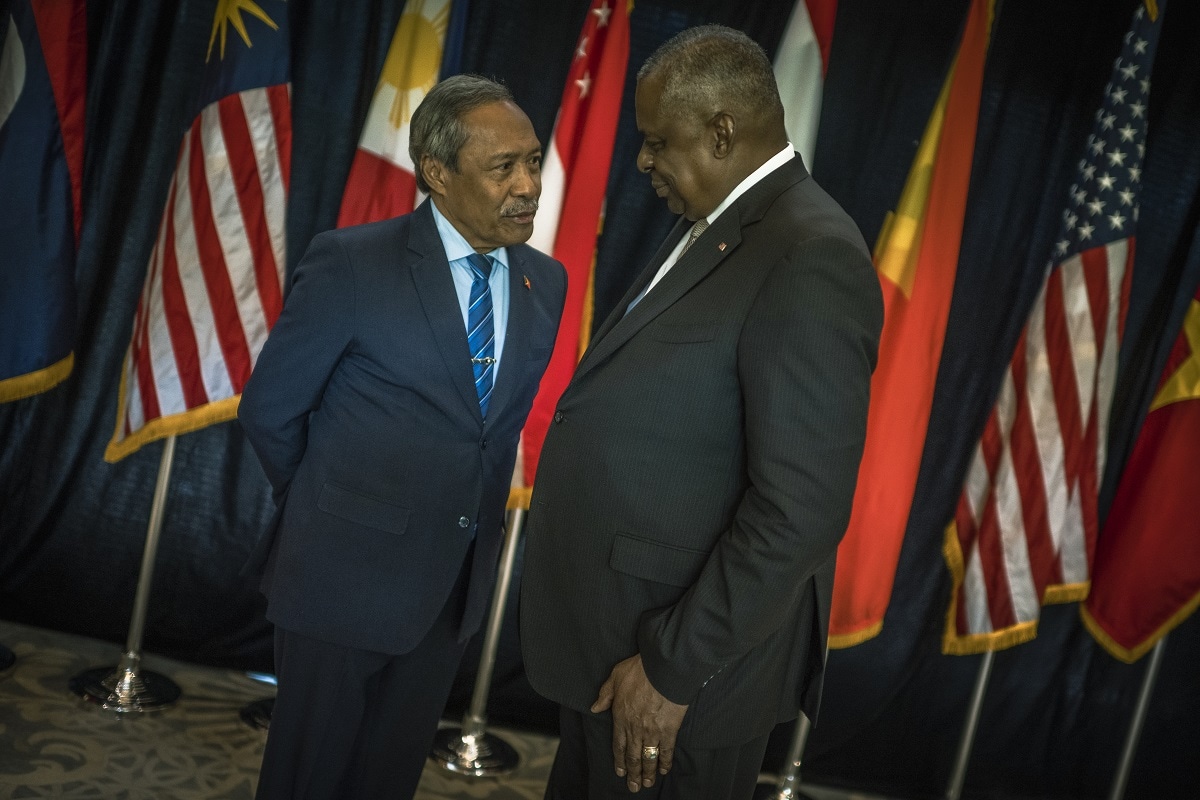
While this diplomatic high-wire act has certainly caught the attention of Australia and its partners, the strategy has yet to bear fruit. It also puts Timor-Leste at risk of having Chinese financial backing as its only viable option. Chinese investment could give Beijing outsized influence over Timor-Leste’s economic affairs. Timorese leaders are aware of the potential downsides of this, but appear ready to embrace the risks if they come short of any compelling alternative to fulfil on their preferred development plans for a domestic oil and gas industry.
Chinese encroachment of that nature would certainly ring alarm bells in Canberra, Jakarta, and Washington. Certainly, it could be argued that China is the only country in this equation that has not previously undercut Timorese sovereignty, as Indonesia’s past annexation of the nation was recognised formally by Australia and tacitly by the United States. Nonetheless, that history should not blind observers to current realities.
Multilateralism and ASEAN membership
Since regaining independence, Timorese leaders have embraced a multilateral friends-with-all approach to foreign affairs and see this as the best way to protect themselves from domination by an external power. It is why they have an active Mission to the United Nations, are a major voice in the Community of Portuguese Language Countries, and host the g7+ headquarters in Dili.
The Timorese view accession to the Association of Southeast Asian Nations (ASEAN) as an integral part of this approach. Full membership in the regional bloc has long been a key aspiration — President Ramos-Horta even noted Timorese support for doing so in his 1987 book Funu: The Unfinished Saga of East Timor. [73] ASEAN’s “in principle” agreement to granting Timor-Leste future membership, reached by consensus among existing member states in November 2022, constituted a major breakthrough for this cause.
While its eventual accession has drawn public support from most ASEAN member states, hesitation continues to linger in some quarters.
Alongside foreign policy, the Timorese believe that full membership into the regional bloc will provide economic benefits, such as bringing Timor-Leste into the ASEAN Free Trade Area. Ramos-Horta alluded to this in an April 2022 interview, stating his view that “ASEAN membership would likely open the door to more economic opportunities, including an increase in foreign investment.” [74] But not all Timorese are as enthusiastic; civil society groups such as Fundasaun Mahein have expressed a level of scepticism about, among other things, the promised economic benefits. [75]
While its eventual accession has drawn public support from most ASEAN member states, hesitation continues to linger in some quarters. In a July 2023 op-ed, Bilahari Kausikan, a former Permanent Secretary and Ambassador At-Large for the Singaporean Ministry of Foreign Affairs, was critical of Timor-Leste’s membership prospects, raising concerns about the country’s economic and political trajectory and arguing that it is “virtually a failing state” and that “ASEAN can only be weakened by another imprudent expansion”. [76] While Kausikan’s characterisation may be extreme, the Timorese will need to assuage concerns about their country’s long-term economic viability.
Furthermore, accession will require unanimous consensus from incumbent member states, and that is not a foregone conclusion. Myanmar’s ruling military junta recently expelled the Timorese ambassador due to the Timorese government’s courting of the democratic opposition National Unity Government, [77] a rift that could motivate the junta to block Timor-Leste’s accession if it were ever in a position to do so.
Regardless, full membership may still be several years off due to stringent benchmarks set in the roadmap released at the 2023 ASEAN Summit. Among other things, Timor-Leste will need to further build its institutional capacity — mainly to meet obligations related to the myriad of meetings ASEAN member states are required to participate in — and demonstrate that it has the “required physical infrastructure and logistics readiness to host [ASEAN] meetings”. [78] Timor-Leste is set on meeting these benchmarks, but doing so will take time and support from the international community, which is dedicating resources to the effort.
Conclusion: Navigating converging challenges
How might this all play out for Timor-Leste?
Throughout its history, Timor-Leste has been caught between global powers — whether during the colonial era, Second World War, or Cold War — and the Timorese are cognisant of the risks but also opportunities presented by geopolitical competition. Yet many of the elements that will shape the country are out of Timor-Leste’s control, and to a significant degree depend on the actions of the United States and China. Timorese leaders will need to deftly balance the two behemoths and its ever-present neighbours, Australia and Indonesia.
Under a best-case scenario, the Greater Sunrise gas project is developed by the late 2020s — whether in Timor-Leste or Australia — and delivers its promised benefits, giving Timorese a sustainable revenue source and a longer runway to diversify their economy. The country avoids a fiscal cliff entirely and achieves a smooth political transition from the “Generation of ‘75” to the next generation of Timorese leaders, with the former willingly and publicly conferring their legitimacy to the latter. In doing so, Timor-Leste deftly navigates geopolitical competition and maintains full control over its economic destiny.
Under a worst-case scenario, Greater Sunrise is not developed by the late 2020s. It fails to deliver anywhere near its promised economic potential, and diversification does not occur. This makes ASEAN accession less likely and pushes state finances off a fiscal cliff, necessitating international financial intervention to avoid insolvency and state failure. The political transition is thrown into chaos, with old divides resurfacing and violently destabilising the country. History repeats itself, and the Timorese unwillingly forfeit much of their economic sovereignty to external powers.
Under a middle path — elements of which seem to be the most likely of these scenarios to eventuate — Greater Sunrise is developed but makes Timor-Leste reliant on Chinese largesse. The country slowly diversifies its economy and avoids financial calamity, but falling global energy prices keep state finances on edge. The political transition is tense, but a replay of the 2006 crisis is avoided. Timor-Leste’s dependence on China causes tension with Australia and Indonesia, leading both to intervene in Timorese affairs in the name of countering Chinese encroachment, and leaving the nation exposed to the worst excesses of geopolitical competition.
Regardless of what eventuates, transnational variables that are largely out of Timor-Leste’s control — such as climate change, future pandemics, and global recessions — will continue to influence the course of events. Nonetheless, these scenarios provide a springboard from which conversations about the country’s challenges can be launched.
The development of Greater Sunrise will be the single most important factor in determining Timor-Leste’s course. The young nation’s future depends on the project’s success. Timorese leaders will be relying on its economic promise; time will tell if they placed the right bet.
